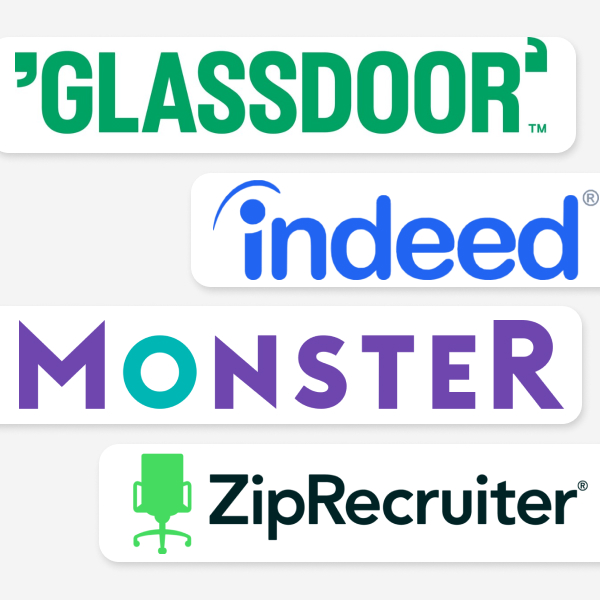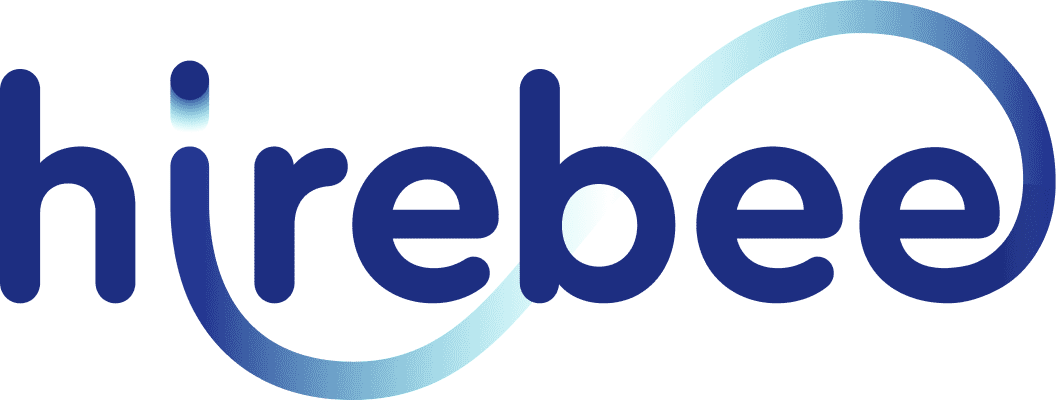Table of Contents
ToggleWhat is Candidate Sourcing?
With 65-75% of the talent market being passive candidates, candidate sourcing offers a valuable opportunity for businesses to access a large untapped pool of talent. It involves strategically reaching out to these candidates who may not actively be looking for jobs, ensuring job openings are visible to the right audience. While rewarding, effective candidate sourcing requires a well-planned strategy to consistently attract top talent.
What are The Top Candidate Sourcing Channels?
The success of candidate sourcing depends on leveraging the right channels to reach potential talent. By utilizing a mix of platforms, recruiters can tap into both active and passive candidates. The top candidate sourcing channels include job boards, talent databases, talent pooling, employee referrals, networking events, and social media. Each channel offers unique advantages, whether it’s reaching a wider audience or targeting specific skill sets. In the following sections, we’ll explore these channels in detail, highlighting their benefits and how to effectively use them in your recruitment strategy.

Job Boards
Job boards remain one of the most effective channels for sourcing candidates. Indeed, with 225 million registered job-seekers, it offers a vast pool of talent, but many of these users may not actively engage with job listings. To maximize this potential, employers can proactively search through the resumes on job boards they are subscribed to, rather than relying solely on applicants who come across their listings.
Some job boards, like Indeed, charge additional fees for access to their resume databases, creating a valuable opportunity to target passive candidates who may not be actively job hunting. This can help employers expand their reach by including passive candidates in their recruitment efforts. For instance, Indeed charges $120-$300 per month for access to their resume database, and other job boards offer similar pricing. Employers can streamline their sourcing process by creating automated email templates and sending bulk emails.
It’s essential to consider the relevance of a job board to the position you’re hiring for—whether by geography or industry. Outside the US, UK, and Canada, Indeed’s database may not be as robust, so employers should look to more localized or niche job boards for better results. Industry-specific job boards can also be valuable for targeting candidates in fields like trucking, acting, or freelancing.
Most popular job boards include:
- Glassdoor: Besides job listings, Glassdoor provides company reviews, giving job seekers insights into company culture and employee satisfaction.
- Indeed: One of the largest job boards globally, offering millions of job listings and resumes. It’s a go-to platform for job seekers and employers alike.
- ZipRecruiter: Known for its user-friendly platform, ZipRecruiter distributes job listings to over 100 job boards, expanding its reach significantly.
- Monster: A well-established job board with a broad database of resumes, offering tools for resume searches and advanced filtering.
Talent Databases
Talent databases are a powerful sourcing channel for employers to explore and utilize effectively. These databases extend beyond traditional job boards and include a variety of platforms where potential candidates may be found. Websites like LinkedIn, GitHub, Behance, and Dribbble are excellent sources for specialized talent, particularly in fields like tech, design, and creative industries. Additionally, industry-specific forums, niche websites, and alumni networks can also serve as valuable sources for finding top talent.
Advanced recruiters understand the value of tapping into these diverse talent databases. By using specific search techniques such as Boolean searches, advanced filters, and keyword targeting, employers can locate high-quality candidates even from non-traditional platforms. Leveraging talent databases allows employers to broaden their reach and connect with passive candidates—those who may not be actively applying for jobs but are still open to new opportunities.
Talent Pooling
Talent pooling is a strategic recruitment practice that helps companies build a pipeline of potential candidates for future job openings. Essentially, talent pooling involves maintaining a database of candidates who were previously rejected but showed promise and could be a good fit for future positions. These candidates, often considered passive, can be a valuable resource when new roles become available, ensuring that you’re not starting from scratch each time you need to hire.
By creating a talent pool, you can maximize the efficiency of your recruitment process, turning previous efforts into long-term assets. This approach reduces time-to-hire and enables quicker access to qualified candidates when job openings arise. Instead of constantly seeking out new applicants, you have a pre-vetted pool of candidates who are already familiar with your company and its recruitment process.
To successfully develop and manage your talent pool, leveraging recruitment software is crucial. It allows you to efficiently organize candidate data, track interactions, and nurture relationships with potential hires. A well-managed talent pool ensures that you have access to a steady stream of candidates who are not only qualified but also have a strong interest in your organization.
Referrals
The internet is not going to replace the power of referrals anytime soon. As a matter of fact, it may be facilitating it. Current statistics suggest that 30-50% of jobs are currently being filled through referrals. And with the internet creating interpersonal networks bigger than ever before, there is a case to be made that no source of hire is better than referrals.
Employers can make use of referrals in many different ways. First, an employee referral program is vital. With an employee referral program, you are encouraging your employees to let you leverage their networks to find the ideal candidate. It is no coincidence that 71% of US companies reported that they have a referral program. For an effective employee referral program, employers should have the following:
- Incentive. Employers should encourage their employees’ participation in the employee referral program through reward systems or any other way they deem appropriate. The incentive should be big enough to ensure participation throughout the entire organization, while not being too costly to drain the recruitment budget.
- Standardizing recruitment. These sorts of strategies should be implemented into your recruitment process and standardized. This means that you should create a process for always informing your employees of a job opening that you would like referrals for.
- Track effectiveness. Employee referral programs will, by no means, always be a walk in the park. To ensure you’re not wasting time pursuing the wrong strategy, you should keep track of the effectiveness of your employee referral program.
External referrals can also be leveraged as a powerful candidate-sourcing channel. Unlike employee referral programs, external referrals see the hiring team rely on their external professional network instead of their coworkers. Recruiters can use their LinkedIn, social media, and interpersonal connections to announce that they are hiring and that they would be open to receiving referrals from their network.
Networking
A powerful network is advantageous in any discipline and setting, and it’s no exception for hiring. With a powerful network, recruiters can enhance their candidate sourcing by announcing their job openings to passive candidates they have added to their network over time. Not only will you directly look for people in your network to apply to your network, but you can also have your network help you fill your job position by referring you to people from their network.
Fostering such a network to announce your job announcements can be facilitated with social media platforms like Twitter and Facebook, and of course with LinkedIn. However, such networks are no good if you are not spending enough time engaging with them. So be sure to be active on all the platforms you are using for networking. These are some common practices to make sure that your engagement with your network is optimal.
- Only connect with people who will add value to your network. Do not go around adding random people to your network to increase its size. Add professionals who suit your target audience and who have a valuable network of their own. Connecting with whoever to increase your number of connections will not only hurt your engagement but will also snowball into a network of irrelevant people, which will hardly bring value to your recruitment.
- Interact with your network. Whether it’s sending the occasional message, interacting with posts, or making or sharing posts of your own, interacting with your network when you don’t need them to fill vacancies will make it more likely for them to give you the time of day when you do need them for filling vacancies.
- Make appealing job announcements. If your job announcements are highly interesting and seem just like any other spammy wall of text, good luck getting any response! Polish your job announcements and make them look like less of an advert and more of a friend reaching out to his friends.
Social Media
Social media has become an essential tool in modern recruitment strategies, greatly enhancing both candidate sourcing and networking efforts. Its ability to reach a wide audience makes it an invaluable asset for marketing job opportunities and engaging with passive candidates who are not actively seeking new roles but may be interested in future opportunities. In addition to job boards and recruitment software, social media can significantly expand your sourcing channels, helping you connect with a larger and more diverse talent pool.
The practice of using social media for sourcing candidates is known as social sourcing. Its primary purpose is to expand job distribution beyond traditional job boards, making job openings visible to a broader audience, including passive candidates. Social media allows recruiters to showcase job opportunities and engage with potential candidates in a more informal, dynamic setting. By building a strong online presence, recruiters can raise awareness about their company, brand, and job opportunities, leading to greater visibility among candidates who may not be actively job hunting but are open to new possibilities.

Benefits of Social Media for Sourcing Candidates:
- Wider Reach: Social media helps you connect with both active and passive candidates across a variety of networks. Even if candidates aren’t looking for a job, they may still come across your post and become interested in future opportunities.
- Networking: Social media facilitates networking with professionals in various industries. By engaging with these networks, you can gain referrals and increase the visibility of your job openings.
- Targeted Search: With the ability to segment posts and campaigns, social media allows recruiters to target specific demographics or professional backgrounds, making it easier to find the right candidates for specialized roles.
- Employer Branding: Regularly posting job opportunities and company updates on social media helps to establish your organization’s brand and attract candidates who align with your values and culture.
Popular Social Media Platforms for Candidate Sourcing
- LinkedIn: As the largest professional network, LinkedIn is the ultimate social media platform for sourcing candidates. With over 830 million members, it combines the features of a job board, talent database, and social network all in one. LinkedIn allows recruiters to search for candidates, connect with them, and promote job openings. It is particularly effective for sourcing passive candidates who may not be actively job hunting but are open to new opportunities.
- LinkedIn Premium, LinkedIn Sales Navigator, and LinkedIn Recruiter provide advanced search filters and access to a global database of professionals, making it a highly valuable tool for sourcing hard-to-find talent.
- Twitter: A great platform for reaching a broad audience, Twitter allows companies to post job opportunities and engage in conversations with candidates. Hashtags and Twitter’s trending topics make it easy to reach professionals in niche fields or industries. Recruiters can also engage in direct conversations with potential candidates or share job openings with followers.
- Facebook: Facebook offers job posting capabilities through business pages and targeted job ads, making it an ideal platform for sourcing candidates. Companies can post job openings in relevant groups or via Facebook Ads to reach candidates in specific geographical areas or industries.
- Instagram: While primarily known for visual content, Instagram has become increasingly popular for recruiting, especially for creative industries. Recruiters can use Instagram’s features like Stories, posts, and hashtags to showcase their company culture and post job openings. It’s particularly effective for engaging with younger professionals or those in industries such as design, fashion, and marketing.
- Reddit: Known for its niche communities (subreddits), Reddit is a platform where recruiters can participate in industry-specific conversations and post job openings in relevant subreddits. It’s ideal for sourcing specialized talent and engaging with a community of professionals who are passionate about specific fields.
- GitHub: For tech and software development roles, GitHub is an invaluable platform for sourcing talent. By reviewing developers’ projects and contributions to open-source software, recruiters can identify highly skilled candidates who may not be actively looking for a job but are open to opportunities.
By leveraging these platforms, recruiters can increase their chances of reaching a diverse range of candidates, build relationships with passive talent, and create a strong employer brand. Social media helps to make recruitment efforts more dynamic and effective by enabling recruiters to engage with potential candidates directly, share job opportunities, and showcase the company’s culture.
Incorporating social sourcing into your recruitment strategy not only enhances the visibility of your job openings but also gives you a more comprehensive approach to talent acquisition, helping you discover hidden gems that traditional methods might overlook. It will also be filled with passive candidates.
Internal Recruitment
Internal recruitment is a strategy where companies look to fill job vacancies by promoting or transferring existing employees, rather than hiring externally. This approach is often implemented by posting internal job openings on company platforms or through communication with managers to identify potential candidates within the organization.
The process typically starts by identifying the role’s requirements and then selecting internal candidates who already possess the skills or potential to succeed in the role. Once a candidate is identified, the company may conduct an interview, assess their qualifications, and decide on the promotion or transfer.
This strategy offers several benefits, such as reducing hiring time and costs, boosting employee morale by offering growth opportunities, and ensuring that the person filling the role is already familiar with the company culture and processes. It also allows organizations to retain valuable talent, increasing overall employee loyalty and engagement.
Choosing the Right Candidate Sourcing Channel for Your Business
Selecting the right candidate sourcing channel is crucial for your recruitment process, as different businesses have varying needs and resources. Below are tailored recommendations for sourcing channels based on the size of your business and the specific needs of HR professionals.
- Sourcing for Small Businesses:
- Job Boards: These platforms offer access to a wide range of job seekers, making them suitable for small businesses looking to reach a large talent pool without a significant budget.
- Employee Referrals: Encouraging current employees to refer candidates can be highly effective for small businesses, as it utilizes existing networks and reduces recruitment costs.
- Social Media: Platforms like LinkedIn and Facebook can help small businesses reach passive candidates and promote job openings at a low cost.
- Sourcing for Mid-Sized Businesses:
- Talent Databases: Utilizing platforms like LinkedIn or specialized job boards allows mid-sized businesses to source candidates from a larger talent pool. These databases offer advanced search features for more targeted hiring.
- Networking: Industry events, webinars, and professional groups provide opportunities to connect with potential candidates and gain referrals.
- Recruitment Agencies: These agencies can help mid-sized businesses manage a higher volume of applications and offer specialized expertise in finding candidates for more complex roles, insights that are especially useful when starting a staffing agency and building credibility in the market.
- Sourcing for HR Professionals:
- Job Boards & Niche Websites: HR professionals often need specialized sourcing channels for technical or niche roles. Niche job boards dedicated to specific industries (e.g., tech, healthcare) can provide higher-quality candidates.
- Talent Pooling: Creating and maintaining a talent pool helps HR professionals keep a reserve of qualified candidates for future openings, streamlining the recruitment process.
- Social Sourcing: HR professionals can leverage LinkedIn and other professional networks to connect with passive candidates and engage in talent building over time.
Each of these channels is chosen based on the size, recruitment needs, and budget of the business, allowing for the most effective and efficient sourcing strategy.









